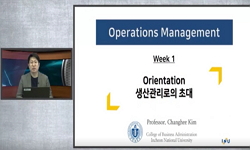Cocoon production in colonial Korea grew at an average annual rate of 11.5% for 29 years from 1910 to 1939, becoming the world's fourth cocoon producer in 1939. A systematic analysis has not been conducted on how this achievement was achieved. This pa...
http://chineseinput.net/에서 pinyin(병음)방식으로 중국어를 변환할 수 있습니다.
변환된 중국어를 복사하여 사용하시면 됩니다.
- 中文 을 입력하시려면 zhongwen을 입력하시고 space를누르시면됩니다.
- 北京 을 입력하시려면 beijing을 입력하시고 space를 누르시면 됩니다.

식민지 조선의 양잠업: 성장의 원천과 특질 = Sericulture in Colonial Korea: The Sources of Growth and Its Characteristics
한글로보기https://www.riss.kr/link?id=A108737625
-
저자
박이택 (낙성대경제연구소)
- 발행기관
- 학술지명
- 권호사항
-
발행연도
2023
-
작성언어
Korean
-
주제어
Silkworm cocoons ; colonial Korea ; production ; distribution ; sericulture policy ; sericulture subsidy ; 누에고치 ; 식민지 조선 ; 생산 ; 유통 ; 양잠정책 ; 잠업보조금
-
등재정보
KCI등재
-
자료형태
학술저널
- 발행기관 URL
-
수록면
143-188(46쪽)
- 제공처
-
0
상세조회 -
0
다운로드
부가정보
다국어 초록 (Multilingual Abstract)
Cocoon production in colonial Korea grew at an average annual rate of 11.5% for 29 years from 1910 to 1939, becoming the world's fourth cocoon producer in 1939. A systematic analysis has not been conducted on how this achievement was achieved. This paper compares the trend of sericulture in colonial Korea with that in Japan, and shows that colonial Korea caught up with Japanese sericulture technology, but did not escape the smallness of scale. The catch-up of Japanese sericulture technology was one reason for the rapid growth, but it was not the only one. Low cost of production factors and ease of access to the US and Japanese markets were also important. The Japanese Government-General of Korea played a key role in establishing the foundation for such competitiveness, and subsidies were an important policy tool. The Japanese Government-General of Korea had a policy orientation to increase the management scale of sericulture farms, but it was not successful. The size and structure of rural houses in colonial Korea was an important factor in maintaining the smallness of the scale.
국문 초록 (Abstract)
식민지 조선의 누에고치 생산량은 1910년부터 1939년까지 29년 동안 연평균 11.5%로 성장하여, 1939년에는 세계 제4위의 누에고치 생산국이 되었지만, 어떻게 하여 이와 같은 고도성장을 하게 되...
식민지 조선의 누에고치 생산량은 1910년부터 1939년까지 29년 동안 연평균 11.5%로 성장하여, 1939년에는 세계 제4위의 누에고치 생산국이 되었지만, 어떻게 하여 이와 같은 고도성장을 하게 되었는지에 대해서는 체계적인 분석이 이루어지지 못하였다. 본 논문은 식민지 조선의 양잠업의 추이를 일본의 양잠업과 비교하여, 식민지 조선은 일본의 양잠기술을 캐치업하기는 하였지만, 규모의 영세성을 벗어나지 못했음을 보였다. 일본의 양잠기술의 캐치업은 고도성장의 한 원인이기는 하지만, 유일한 원천은 아니었다. 생산요소 가격의 저렴함, 미국 및 일본 시장으로의 접근의 용이성도 중요하였다. 조선총독부는 이와 같은 경쟁력 확보를 위한 기반 구축에 핵심적 역할을 하였으며, 보조금은 중요한 정책 수단이었다. 조선총독부는 양잠농가의 경영 규모를 늘리려는 정책적 지향을 가지고는 있었지만, 성공하지 못하였는데, 조선 농촌가옥의 규모와 구조는 규모의 영세성을 지속시키는 중요한 요인이었다.
동일학술지(권/호) 다른 논문
-
- 경제사학회
- 최상오
- 2023
- KCI등재
-
- 경제사학회
- 유동우
- 2023
- KCI등재
-
- 경제사학회
- 김태훈
- 2023
- KCI등재
-
- 경제사학회
- 유동우
- 2023
- KCI등재




 KISS
KISS






